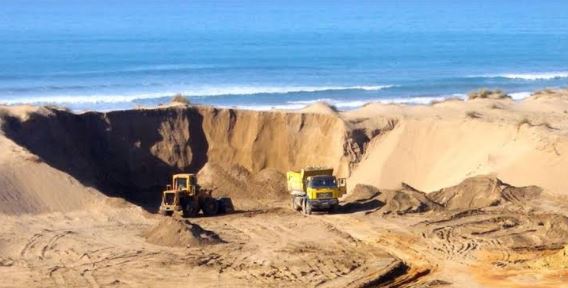Hidden in Plain Site. The Sand Mining Catastrophe in India
 Hidden in Plain Site
Hidden in Plain Site
In India, it is said that the really corrupt love industries where three criteria are met. Dealings in cash, a production process that is as simple as it can be, with zero marketing required, and ideally, out of sight. Depending on the country’s growth stages, different sectors have stepped up and filled the need, till they were cleaned up due to changes in technology, the industry structure, or even bigger stakes opportunities elsewhere.
Mafias thus came up and went in sectors as varied as cable TV distribution in the 90’s, toll collection on roads since the 2000’s, and more. Both of these incidentally finally fell prey to technology and the ‘organisation’ of these sectors. Sand mining, on the other hand, has only grown manifold, and continues to be largely unregulated effectively in India. The building and construction boom that has happened in the past two decades has also meant a massive increase in demand, which has at least made the ‘out of sight’condition untenable now.
Not only that, the damage from uncontrolled sand mining is beginning to reach homes, and impact people far away, as it hurts river ecosystems that are critical for drinking water and irrigation needs. Virtually every coastal state, from Kerala to Tamil Nadu to Andhra Pradesh, Maharshtra and Karnataka, besides states with critical river systems like Madhya Pradesh, Uttar Pradesh and West Bengal, are risking their future by allowing it to go unchecked.
We have covered this before too. In fact, a few months after we covered it, the UN Environment Programme, (UNEP) also came out with a report on the sector, calling it one of the most destructive activities impacting the earth. The report simply said that current methods and usage rates were unsustainable. And the sector remained among the least regulated in the world.
So unregulated in fact that even estimates of global sand mining are derived from cement production. Thus with 6-7 tonnes of sand used with every tonne of cement, global estimates based on cement use put sand mining as a 40 billion tonne industry.
Quite clearly, it is time to take up the issue afresh, including the possible tradeoff between higher construction costs by mandated recycling and reducing sand mining. In fact, this tradeoff may not really be a tradeoff, after one considers the damage and cost of removal of construction rubble that has been dumped across cities in India. After a ban on dumping of rubble in cities like Delhi, it is not uncommon to see smaller vehicles being used to dump the material in any abandoned site or even the city’s jungles. Sometimes destroying the ability of those sites to be ground for any vegetation at all.
Alternatives like fly ash from thermal power stations and their ash ponds, or even stone dust from quarries , have been used where mandated, but still not been explored actively.
One of the more interesting options might serve two benefits. Most of our large reservoir dams today are storing well below capacity, thanks to the years of accumulated sand (silt) in their reservoirs. A one time drive to take out this sand and use it for the construction industry will improve storage capacity as well as satiate the needs of nearby regions too. Alternative construction materials need to be explored as actively as possible to prevent the mayhem in and around water bodies for the material. Dams like the Khadakwasla dam in Maharashtra for instance have seen their reservoir capacity reduced to 40%, due to siltation. Bigger dams like Tehri Dam have seen serious issues from siltation too.
The rivers do create a certain amount of sand every year, to serve a part of our needs. But they definitely cannot provide us the sand for our wants, which forces us to extract at rates of upto 40 times the deposit speed of rivers.
As a new decade begins, sand mining demands urgent attention. Much like our increasing use of fossil fuels for energy generated a strong response in the previous decade, in the form of renewable energy generation, its time we responded to sand mining with the same logic of incentives and science. China, which responded to the previous fossil fuel challenge with a vengeance, needs to step up here too with India, not only because it is the largest consumer yet again, but also because the damage from sand mining is also becoming evident in its own water systems.
Countries with a ‘clean’ reputation, such as Singapore, can hardly wash their hands off the issue, with Singapore itself and its reclamation of an extra 50 square miles of sea, by using imported Indonesian sand, reportedly leading to the wiping out of some 24 small islands off the map in Indonesia.




